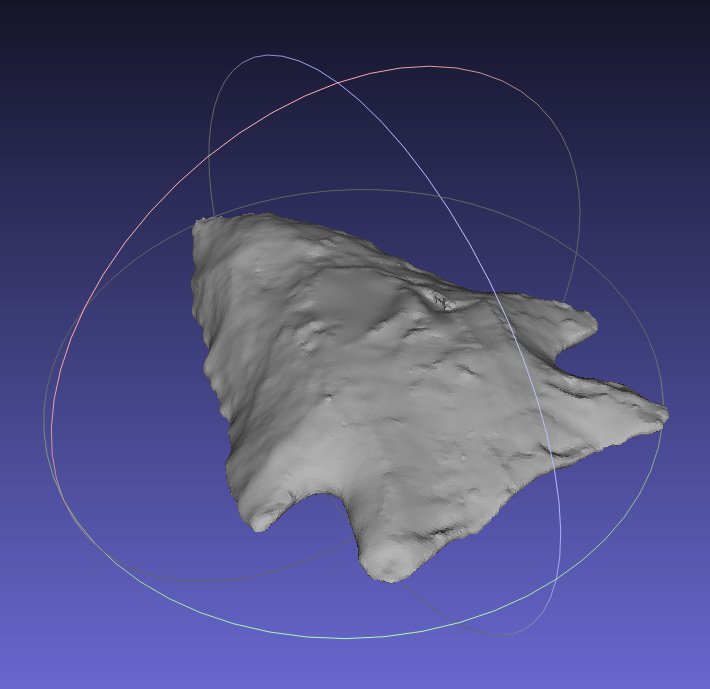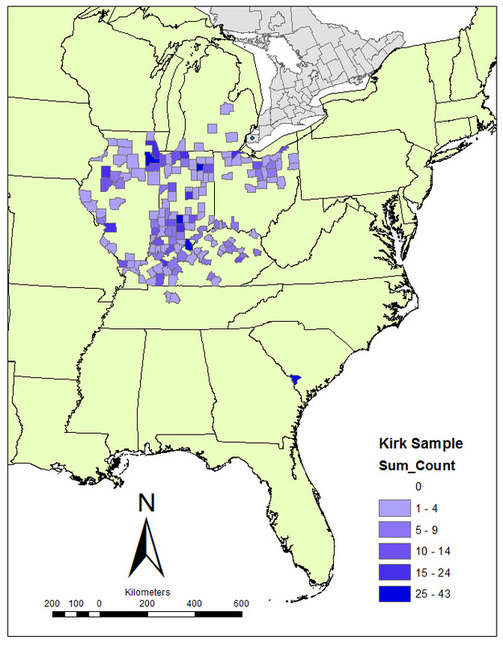 Distribution of Kirk Corner Notched cluster projectile points (adapted from Justice 1987).
Distribution of Kirk Corner Notched cluster projectile points (adapted from Justice 1987). Although many authors have remarked on the striking similarity of Kirk Corner Notched projectile points from across the east, as far as I know there has never been a concerted effort to assemble a dataset of sufficient detail and spatial scope to allow us to characterize and analyze the kinds, amounts, and spatial components of variability among these points. Given how widespread Kirk is, that's a big job.
I assembled a relatively large dataset of Kirk points from the Midwest as part of my dissertation work, and have used that information in a couple of publications (e.g., this one and this one). I've now started the process of adding to that dataset, beginning with information from Kirk points in large collection from Allendale County, South Carolina, that was donated to SCIAA in the 1990's. I'm working my way through the Kirk Cluster points in that collection, adding them to my existing database and producing 3D digital models.

 Spatial distribution of Kirk sample by county as it currently sits in my database (889 points total).
Spatial distribution of Kirk sample by county as it currently sits in my database (889 points total). If you're like me and are interested in questions about Kirk (including where it comes from and what it can tell us about the Early Archaic societies of the Eastern Woodlands), I ask you to think about the idea of producing the largest-ever Kirk dataset ever assembled. How similar are Kirks, really, across this large area? How does variability within Kirk break down according to space? Can we identify regional differences in "stylistic" variation? Are there discontinuities or is variability clinal? What about regional differences in the scales of raw material transport? Is morphometric variability isomorphic with lithic raw materials? Can we identify regional variation in "functional" attributes such as resharpening patterns, haft size, blade configuration, etc.? Just from looking about the first 30-40 Kirk points I've examined from South Carolina, I'm guessing there might be a higher incidence of beveling (all left hand beveling so far) here than in the Midwest.
Anyway, this post isn't supposed to be high pressure. I won't necessarily be able to devote a great deal of time to this on any given day. I'm just letting you know that if you're interested in Kirk and want to think big, I'm right there with you. Let me know if you want to participate in an effort to create a massive Kirk dataset that we can use to address all kind of potentially interesting questions about early Holocene hunter-gatherers in the Eastern Woodlands. Please pass it on to anyone you think might be interested.


 RSS Feed
RSS Feed
